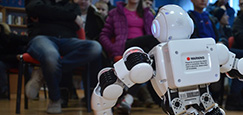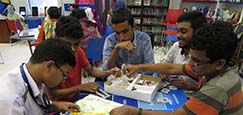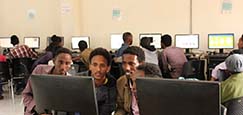ROBOTICS
PROGRAM TOOLKIT FOR AMERICAN SPACES
This toolkit explains the basic history of robotics and provides resources for American Spaces coordinators to develop robotics programming based on varying levels of technology.
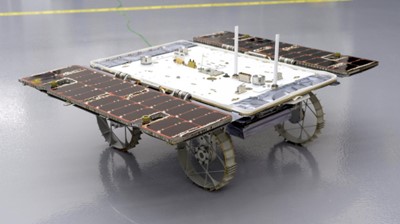
Photo Credit: NASA
This is CADRE (photo above), one of three small robots being tested in 2025 at NASA’s Jet Propulsion Laboratory in California. They are solar powered, about the size of a carry-on suitcase, and scheduled to launch in 2026. They’ll work together to map the surface of the moon and record the data autonomously – without explicit commands from mission controllers on Earth. CADRE is a collaboration between NASA, Clemson University, the California Institute of Technology (CalTech) and Motiv Space Systems, a space robotics company in California. Robotics engineering is often a collaborative effort.
KEY DEFINITIONS
Autonomous – describes a machine or device that can operate with little or no human control or intervention.
Engineering Design Process – a common series of steps that engineers use to create products and processes. Parts of the process often need to be repeated many times to achieve design goals.
Industrial Robot – a reprogrammable robot used in an industrial environment for manufacturing goods.
Iterative design – a cyclic design process often used in engineering. A prototype is tested, analyzed, and improved with the results of testing. The goal is to improve the quality and functionality of the design.
Reprogrammable robot – a robot that can be programmed over and over to do different tasks.
Robot – a mechanical device that automatically performs work normally done by humans. It may or may not be designed to resemble human bodies or parts of human bodies.
Service Robot – a programmable robot that performs useful services for humans.
MORE RESOURCES
Kanopy Films
Design and Thinking | Kanopy (2012, 1 hr 14 min)
Design & Thinking is a documentary exploring the idea of “design thinking.” How do we fully engage organizations to think about the changing landscape of business, culture and society?
The A.I. Race | Kanopy (2014, 55 min) This documentary explores how artificial intelligence will change your job as new research shows how much of what you do could be done by robots. From drivers to lawyers to doctors, the film brings affected workers face to face with A.I. experts.
Maker | Kanopy (2014, 1 hr 5 min)
From the producers of the internationally acclaimed Design & Thinking, Maker looks into the current “maker” movement in America – a wave of do-it-yourself and do-it-together culture fueled by passion and powered by the advent of new technologies. A related toolkit for this documentary is available on the Managing American Spaces website.
Overdrive Books

Makerspace Projects for Understanding Robots (Libby) – brief book with introductory projects

Make: Volume 93, Summer 2025 (Libby) This issue focuses on robotics projects including building a robotic arm, an AI puppy, and more.
INTRODUCTION
The modern robotics industry began in 1961 in a U.S. automobile manufacturing plant with the first robotic arm completing work previously done by humans. Robots have become increasingly sophisticated since then and are integrated into many aspects of modern life.
This toolkit provides videos, articles, and lessons plans for American Spaces audiences to learn about the robotics industry, understand the role of American innovation in robotics, and to develop robotics skills.
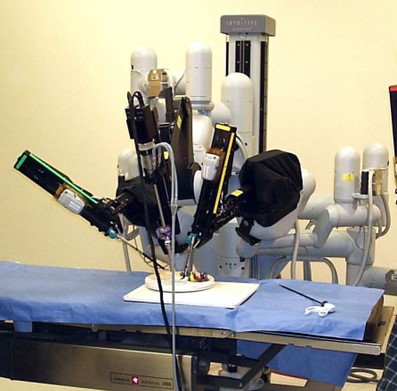
BACKGROUND INFORMATION
The first modern robot was patented by George Devol, an American engineer, and used in a General Motors automobile factory in New Jersey in 1961. It lifted and stacked hot, heavy, metal car parts. This proved that robotics could successfully complete work that was repetitive, dangerous, or difficult for humans. Modern versions of Devol’s robotic arm, called Unimate, continue to be used in manufacturing plants worldwide.
The addition of sensors to robots allowed them to navigate their environments with more autonomy. One early example, called Shakey, was designed and developed in the 1970s at Stanford University in California. Shakey had vision sensors and was programmed to apply reasoning in its actions. It was foundational for the future development of autonomous robots and AI.
Since then, advancements in sensors, computer processing capabilities, microelectronics, programming languages, and the integration of AI have enabled robots to perform more complex tasks in many challenging environments. For example, in manufacturing, robots improve safety and increase productivity. In medicine, surgical robots improve patient care. Robots in outer space and on the ocean floor successfully work in environments where humans cannot.
Throughout the history of modern robotics, American individuals, universities, and companies have continued to collaborate and innovate in this growing, global industry.
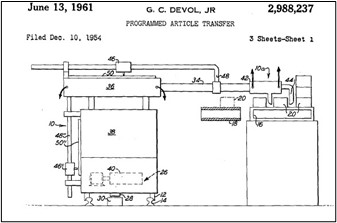
PLANNING ROBOTICS PROGRAMS
Impactful robotics programs can be implemented with varying equipment levels from a computer with internet access through sophisticated robotics kits. Robotics programs and activities are ideal for advancing the U.S. Foreign Policy priority of highlighting American innovation, achievement, and excellence. Work with the Public Diplomacy Section to determine which audiences these activities and programs should engage, what changes you would like to see in these audiences after they participate, and what success would look like.
Next, consider who will lead the activities and programs. Will existing staff facilitate the programs? Are they already skilled in coding and robotics or will they need training? Will it be necessary to hire outside facilitators or recruit skilled volunteers?
Then, think about the equipment and supplies you will need to carry out the activities and programs. It is best to start with a small or temporary program. Assess how audiences respond, then revise and invest in your programming accordingly.
Depending on the space, technology, and facilitators that are available to you, there is a wide variety of robotics programming to consider for your American Space.
Program Level 1: Foundational Access – Coding and the Engineering Design Process
At this introductory level, American Spaces can provide meaningful skills development for robotics through programs that teach the engineering design process and the basics of computer coding necessary for robotics. The programming languages most commonly used in robotics and robotics education are Block Coding, Scratch, Python, C++, and Java.
Equipment Needed: Computer and Internet Access
Resources and Lesson Plans for Level 1
- The Engineering Design Process: A Taco Party | PBS A 4-minute video overview of the Engineering Design Process with a focus on iterative design.
- Introduction to the Engineering Design Process | PBS A 90-minute lesson that includes a hands-on activity for applying and analyzing the steps of the design process.
- Engineering Design Process & Design Thinking Activity | TeachEngineering.org A lesson including a thorough explanation of the steps in the design process and an overview of design thinking, from a National Science Foundation Engineering Research Center.
- Freecodecamp.org, Code.org, Raspberrypi.org – three sites with free online coding lessons.
- Search MOOC.org for free online courses in specific programming languages.
Program Level 2: Intermediate Engagement – Virtual Robotics
At this level of engagement, participants code robots on virtual robotics platforms. They get real-time feedback on how their coding impacts the virtual robots, and have the opportunity to test, evaluate, and reprogram as needed. These are critical skills for the robotics industry.
Equipment Needed: Computer and Internet Access
Resources and Lesson Plans for Level 2
- VEXcode VR – A virtual robotics simulator with a free version available in more than 20 world languages including Spanish, Chinese, Russian, and Arabic.
- Virtual Robot Simulator | vrobotsim.com – A free virtual robotics simulator with tutorials, challenges, and more.
- Robot Blocks Simulator | Rocksi – A free virtual simulator using block programming.
- Code a Mars Rover Driving Game – Technology Project | NASA JPL Education–This NASA project can be completed virtually. It’s part of a larger collection of lessons, projects, videos, and more from NASA’s Jet Propulsion Laboratory.
- Educator Resources | NASA JPL Education The collection is searchable by keyword (robot), topic, type of activity, and age.
- Virtual Robot Curriculum – Carnegie Mellon Robotics Academy – Carnegie Mellon University This is an extensive, fee-based virtual robotics curriculum.
- Cyberbotics: Robotics simulation with Webots and Gazebo | gazebosim.org are sophisticated and complex platforms that allow for designing, programming, and testing virtual robots. The target audience is advanced users and requires downloading software.
Program Level 3: Hands-on with Robotics Hardware
At this level, American Spaces will need robotics kits or hardware to provide the hands-on experience of designing and coding robots to complete challenges or participate in competitions. There are many options for purchasing robotics equipment for educational purposes. These include VEX, Sphero, Lego, Tetrix, Raspberry Pi, Arduino, and more.
Equipment Needed: Computers, Internet Access, and Robotics Equipment
Resources and Lesson Plans for Level 3
- Robotics Alliance Project | NASA A collection of links and resources including information about robotics education and competitions.
- Arduino Project Hub Provides a variety of beginner projects and tutorials for learning robotics using Arduino.
- VEX Robotics Provides educational resources and project ideas for learning robotics using VEX kits.
- FIRST Robotics Offers comprehensive resources and support for building and programming sophisticated robots.
- Robotics: Engineering a Rocket Transporter | NASA JPL Education – This lesson from NASA’s Jet Propulsion Laboratory can be used with various robotics equipment (listed in the lesson) and can be used in either a virtual or physical robotics environment. It’s part of a larger collection of lessons, projects, videos and more from NASA’s Jet Propulsion Laboratory.
- Educator Resources | NASA JPL Education The collection is searchable by keyword (robot), topic, type of activity, and age.
Best Practices:
- Anchor design and programming challenges in real world problems that can be solved using robotics.
- Use the Engineering Design Process to develop design thinking that focuses on solving problems, iterating (testing, evaluating, redesigning, retesting), and collaboration.
- Build capacity in staff so they’re able to support participants as they problem solve.
- Ask your Embassy contacts or REPS if they can connect you with other American Spaces doing robotics programming for mentoring or collaboration.
Recommendations:
- Modify existing robotics challenges to better suit the local context or create challenges that address problems specific to the local environment.
- Engage local universities or companies engaged in robotics engineering for guest speakers, site visits, and mentorship.
- Engage Embassy staff, USG alumni, U.S. Speakers Program, and other USG personnel and programs with coding, engineering, and/or robotics expertise.
- Provide opportunities for personal, independent learning via online coding and other skill development resources.
- Provide opportunities for collaboration and creativity via design thinking and robotics challenges, both virtual and physical.
- Provide opportunities to share projects and get feedback, either virtually or physically, with local, national, or international peers.
DISCLAIMER
The views expressed in these links and resources do not necessarily reflect those of the U.S. government.
The Office of American Spaces and Educational Advising does not promote or support any brand of robotics equipment. Information is provided solely as a resource for coordinators to gather ideas for creating robotics programs and to research what equipment may work best in their context. No brand or company mentioned in this toolkit is endorsed by the Office of American Spaces and Educational Advising.
Updated September 2025





